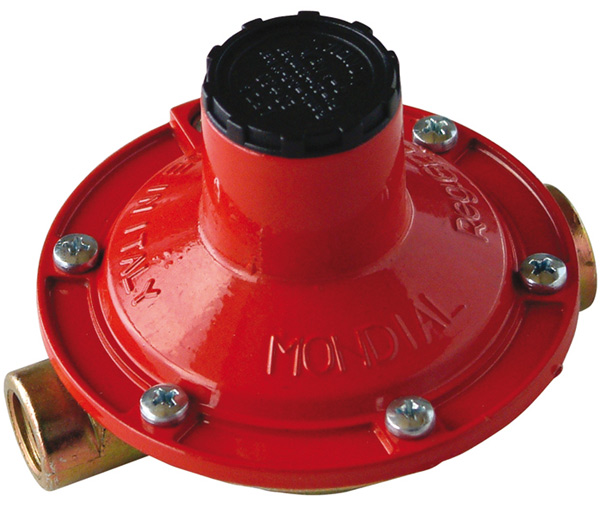Low pressure regulators used for LPG and gas
Low-pressure regulators, present in multiple dimensions and variants, are used in maintenance and management of gas and LPG flows

The low pressure regulators used for LPG and gas
The components relating to gases and LPG are a point of strength for Gnali Bocia. In particular, different types of devices can be distinguished within this macro category:
- LPG gas reducers: which are divided into high and low pressure regulators;
- Fittings and valves;
- Pipes;
- Pressure stabilizers and others.
The correct realization of these components is fundamental because the applications that use a gas (or just LPG) as the fluid conveyed are many and range on very different fields.
The components relating to gases and LPG are a point of strength for Gnali Bocia. In particular, different types of devices can be distinguished within this macro category:
- LPG gas reducers: which are divided into high and low pressure regulators;
- Fittings and valves;
- Pipes;
- Pressure stabilizers and others.
The correct realization of these components is fundamental because the applications that use a gas (or just LPG) as the fluid conveyed are many and range on very different fields.
Critical issues in the use of LPG
The acronym LPG stands for "liquefied petroleum gas" and is a mixture of low molecular weight hydrocarbons such as propane (which is the main constituent) and butane. This gas is easily available and has a reduced environmental impact compared to other fuels thanks to the presence of sulfur. It is considered a very clean gas that reduces the problems of environmental pollution and greenhouse effect. In addition, the calorific value is high and this characteristic makes it particularly suitable as an automotive propellant.
The main problems include high flammability, even if the gas is not toxic. Furthermore, it has a higher density than that of air and for this reason it tends to stagnate and concentrate on the ground (causing risks of asphyxiation). A famous example is that of the Viareggio railway accident in 2009: although the failure occurred due to fatigue problems concentrated in the axles, the presence of LPG gas (which was transported by this train) caused explosions and flames causing an environmental disaster and numerous deaths.
Currently, this criticality is still one of the major problems for vehicles operating with this gas: there are, in fact, limitations for underground parking and, if they are not respected, there could be very serious risks both for the structure and for the people.
The main problems include high flammability, even if the gas is not toxic. Furthermore, it has a higher density than that of air and for this reason it tends to stagnate and concentrate on the ground (causing risks of asphyxiation). A famous example is that of the Viareggio railway accident in 2009: although the failure occurred due to fatigue problems concentrated in the axles, the presence of LPG gas (which was transported by this train) caused explosions and flames causing an environmental disaster and numerous deaths.
Currently, this criticality is still one of the major problems for vehicles operating with this gas: there are, in fact, limitations for underground parking and, if they are not respected, there could be very serious risks both for the structure and for the people.
LPG reducers and other components
From what has been underlined in the previous paragraph, it is clear that the correct design and construction of the components suitable for LPG is fundamental to avoid safety problems.
A fundamental component is the reducer which has the main task of managing the incoming gas pressure (which can derive from the main supply line) and reducing it to a value desired by the system designer. If this is not possible, an additional valve is also installed many times to reduce the pressure. Usually the reducers can be used alone or in series with other low pressure reducers and regulators that allow optimal combustion.
As mentioned, Gnali Bocia moves in this industry by guaranteeing certified products of excellent quality. In addition, the size of the catalog available allows the customer to choose the most suitable model for their needs.
A fundamental component is the reducer which has the main task of managing the incoming gas pressure (which can derive from the main supply line) and reducing it to a value desired by the system designer. If this is not possible, an additional valve is also installed many times to reduce the pressure. Usually the reducers can be used alone or in series with other low pressure reducers and regulators that allow optimal combustion.
As mentioned, Gnali Bocia moves in this industry by guaranteeing certified products of excellent quality. In addition, the size of the catalog available allows the customer to choose the most suitable model for their needs.
16/06/2020
I contenuti di questo sito non hanno carattere di periodicità e non rappresentano 'prodotto editoriale'.








